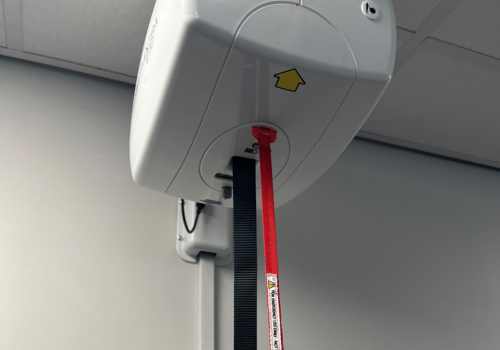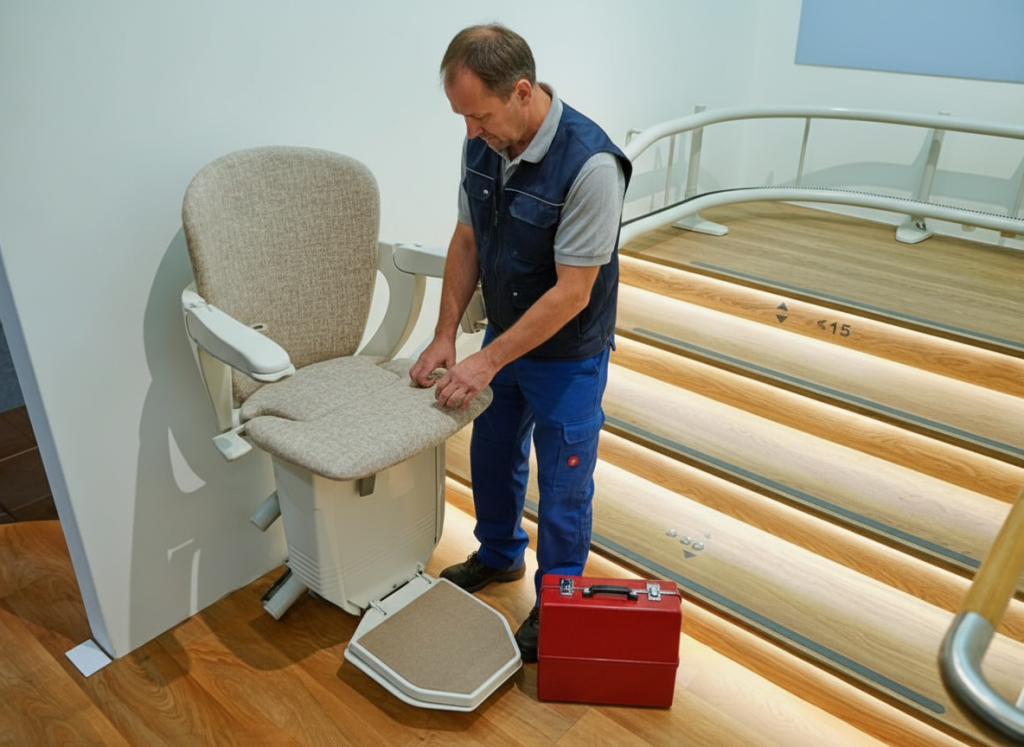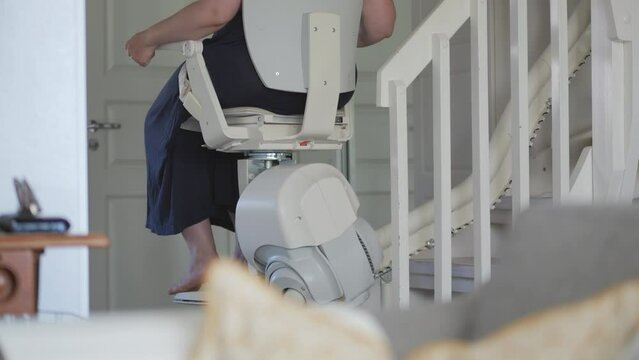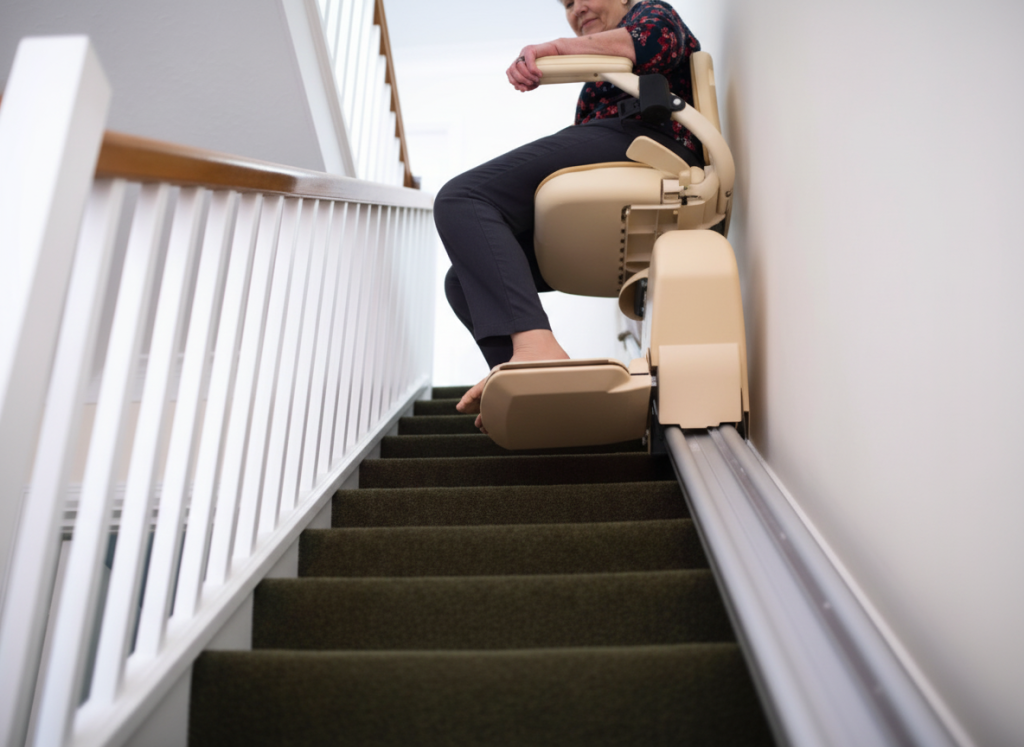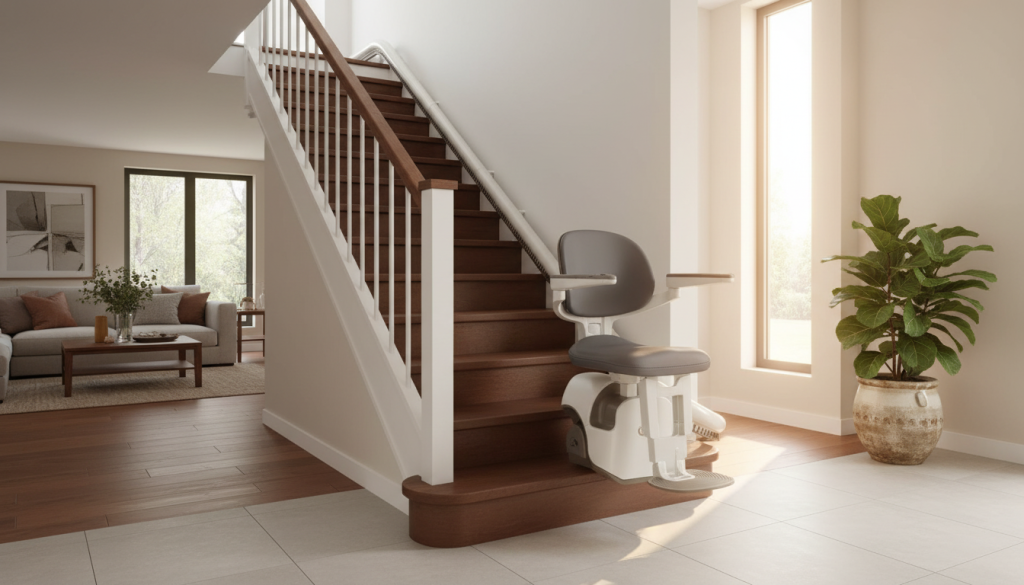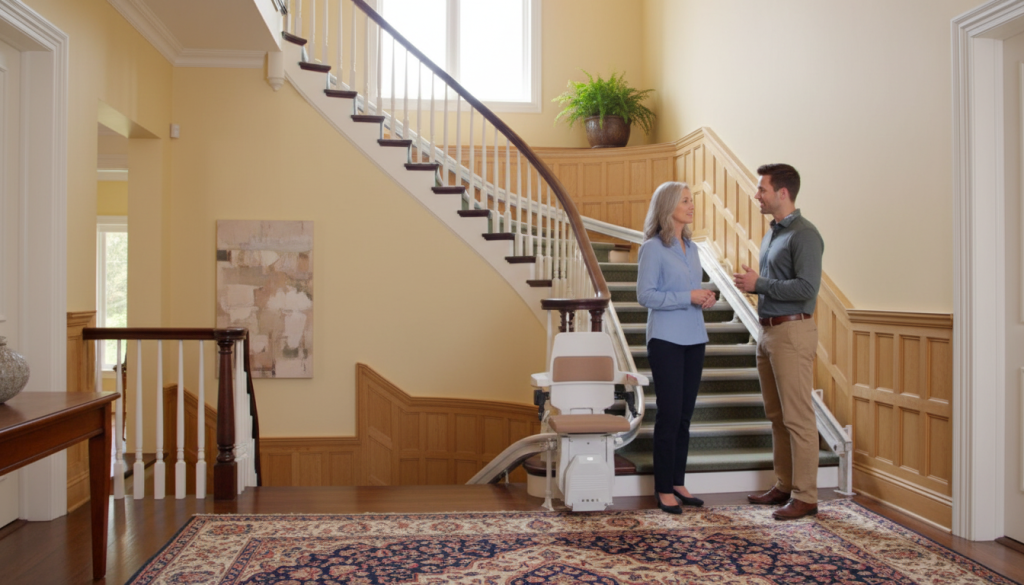Learning how to use a ceiling hoist step by step can transform your daily life, bringing back independence, dignity, and safety to transfers between bed, chair, and bathroom. Whether you’re a caregiver, family member, or someone considering a ceiling hoist for your home, this comprehensive guide walks you through everything you need to know about operating these life-changing mobility aids safely and confidently.
How does a ceiling hoist work?
Ceiling hoists operate using a motorised track system mounted securely to your ceiling. The track guides a hoist unit that lifts and transfers people smoothly between different locations in your home. Modern ceiling hoists like the Luna IPx4 Ceiling Hoist combine innovative engineering with user-friendly controls, making them suitable for both home care and professional environments.
The system works by supporting a person in a specially designed sling, which connects to the hoist unit via secure straps. The hoist then moves along the ceiling track, allowing safe transfers from bed to wheelchair, bathroom to bedroom, or any combination your track layout permits.
What equipment do you need before using a ceiling hoist?
Before operating any ceiling hoist, you’ll need several essential components. First, ensure your hoist system is professionally installed and includes all necessary parts: the ceiling track, hoist motor unit, sling, and remote control handset.
The sling is particularly crucial; different slings suit different transfer needs. Full-body slings provide complete support for people who cannot support their weight, whilst toileting slings allow for personal care activities. Your professional hoist installation team will recommend the right sling based on individual mobility requirements.
You’ll also need a clear transfer path. Remove any obstacles from the area where the hoist will travel, including furniture, personal items, or anything that might interfere with smooth operation.
How do you prepare someone for a ceiling hoist transfer?
Preparation is key to safe ceiling hoist operation. Start by explaining what’s going to happen, even if the person has used the hoist before. This helps reduce anxiety and ensures cooperation during the transfer.
Position the sling correctly underneath the person. For bed transfers, you may need to log-roll the person gently to position the sling. Take your time with this step; rushed sling positioning can lead to discomfort or unsafe transfers.
Check that all sling straps are untangled and properly positioned. The sling should sit snugly but not tightly around the person’s body, with no wrinkles or twisted fabric that could cause pressure points.
What are the step-by-step instructions for using a ceiling hoist?
Step 1: Initial Safety Checks Before each use, visually inspect the hoist for any obvious damage. Check that the track is clear, the hoist unit moves freely along the track, and the remote control is functioning properly.
Step 2: Position and Attach the Sling. Lower the hoist to an accessible height using the remote control. Attach the sling straps to the hoist spreader bar, ensuring they’re connected to the correct points. Different sling types have specific attachment points marked clearly.
Step 3: Secure the Person in the Sling Position the sling around the person according to the manufacturer’s instructions. For full-body slings, ensure the person’s arms are through the arm holes and the sling supports their back properly. The head support should cradle their head without restricting breathing.
Step 4: Perform a Pre-lift Check. Before lifting, double-check all connections. Ensure the sling is properly positioned, all straps are connected securely, and the person is comfortable. Ask if they’re ready to proceed.
Step 5: Begin the Lift Using the remote control, slowly lift the person just enough to remove their weight from the bed or chair. Pause here to ensure everything feels secure and comfortable. If anything seems wrong, lower them back down immediately.
Step 6: Complete the Lift and Transfer. Continue lifting to the required height, typically just enough clearance to move safely to the destination. Use the hoist’s travel function to move along the track to the target location.
Step 7: Lower Safely Position the person over the destination (wheelchair, bed, or toilet) and slowly lower them. Support their positioning as needed, ensuring they’re seated safely before disconnecting the sling.
What safety precautions should you follow when using a ceiling hoist UK?
Safety must always be your top priority when operating ceiling hoists. Never exceed the hoist’s weight limit; most models safely lift between 130kg and 200kg, but always check your specific model’s specifications.
Maintain regular servicing schedules. Professional servicing ensures your hoist operates safely and complies with UK regulations. Annual servicing is mandatory for home use, whilst care environments require six-monthly inspections under LOLER regulations.
Keep emergency procedures in mind. Know how to use the emergency stop function and manual lowering system in case of power failure. Modern hoists like the Freeway Transactive Xtra Ceiling Track Hoist include battery backup systems for additional safety.
Never leave someone suspended in a hoist. Complete transfers promptly and remove the sling once the person is safely positioned. Prolonged suspension can cause circulation problems and discomfort.
How do you maintain your ceiling hoist for long-term safety?
Regular maintenance keeps your ceiling hoist operating safely and extends its lifespan considerably. Clean the track regularly with a soft cloth to remove dust and debris that could affect smooth operation.
Check moving parts for signs of wear or damage. Look for frayed cables, worn wheels, or any unusual sounds during operation. If you notice anything concerning, contact a qualified engineer immediately.
Battery maintenance is crucial for hoists with backup power systems. Follow the manufacturer’s guidance for battery care, typically involving regular charging cycles and periodic replacement.
Professional maintenance should never be skipped. Qualified engineers perform detailed safety checks, lubricate moving parts, and replace worn components before they cause problems. This preventive approach protects both users and equipment.
What common mistakes should you avoid when using a ceiling hoist?
Many operational problems stem from rushing the process. Take time to position slings correctly, check connections thoroughly, and move at a comfortable pace for the person being transferred.
Incorrect sling selection causes both safety issues and discomfort. Different slings suit different needs: toileting slings for bathroom transfers, full-body slings for complete support, and standing slings for people who can bear some weight.
Poor communication creates anxiety and reduces cooperation. Always explain what you’re doing, ask for feedback about comfort levels, and ensure the person feels involved in their transfer.
Ignoring weight limits or using damaged equipment compromises safety. If you’re unsure about anything, stop and seek professional advice rather than taking risks.
How does using a ceiling hoist improve quality of life?
Ceiling hoists transform daily life for people with mobility challenges and their caregivers. They enable safe transfers without the physical strain of manual lifting, reducing injury risk for everyone involved.
For users, hoists restore access to all areas of their home. Bedroom-to-bathroom transfers become possible, allowing people to maintain personal hygiene independently. This access to familiar spaces significantly improves mental health and overall well-being.
Family dynamics improve when physical caregiving becomes less demanding. Partners and adult children can provide emotional support without risking physical injury from manual transfers. This balance helps maintain relationships while ensuring practical care needs are met.
The confidence boost from successful hoist use often encourages people to consider other mobility adaptations for their home. Once they experience how assistive technology enhances rather than restricts their lifestyle, they become more open to additional aids that could further improve their independence.
Why should you seek professional help with ceiling hoist installation?
Professional installation ensures your ceiling hoist meets all safety requirements and operates correctly from day one. Ceiling structure varies significantly between properties, and qualified installers assess whether your ceiling can support the loads involved.
Track layout planning requires expertise to optimise transfer routes through your home. Professional surveyors consider room layouts, doorway positions, and transfer requirements to design systems that maximise mobility whilst minimising structural work.
Integration with existing mobility equipment, like stairlifts, requires careful coordination. Experienced installers ensure different systems work together harmoniously, creating comprehensive mobility solutions rather than isolated installations.
Training should always accompany installation. Professional teams provide hands-on instruction for users and caregivers, ensuring everyone understands safe operation procedures before the installation team leaves.
Choosing the right ceiling hoist system involves evaluating your specific needs, home layout, and future requirements. Our experienced team at OBAM provides comprehensive assessments to help you understand the benefits of using hoists in your particular situation.
With proper installation, training, and maintenance, ceiling hoists provide years of reliable service, transforming challenging transfers into smooth, dignified movements that preserve independence and enhance quality of life. Don’t let mobility challenges limit your access to your own home. Explore how ceiling hoists can restore the freedom to move safely between rooms, maintaining the lifestyle you deserve in the comfort of familiar surroundings.

